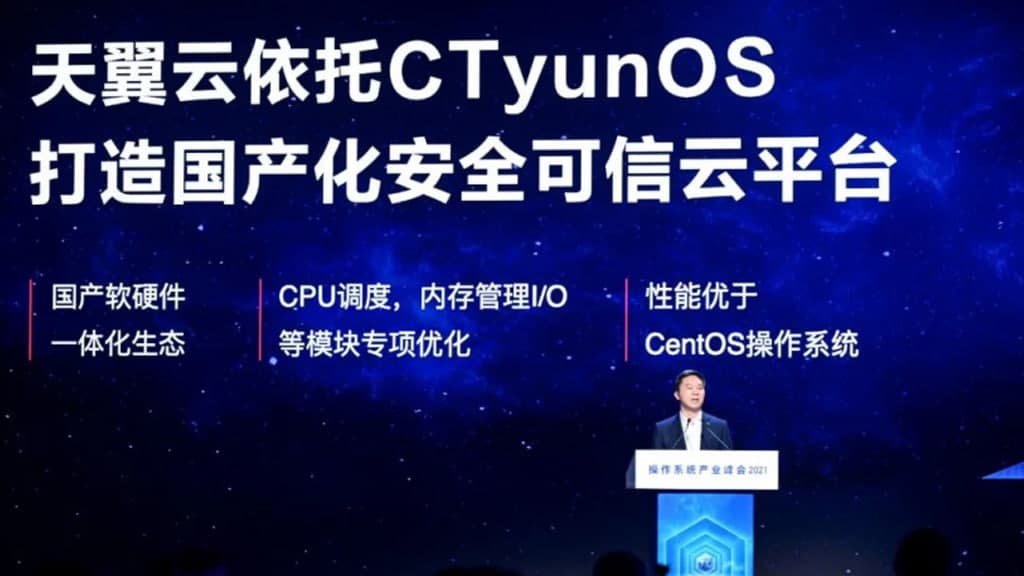Euler
CTyunOS launched based on Huawei OpenEuler operating system

At OpenEuler Summit 2021, Huawei has officially donated the OpenEuler open source operating system to OpenAtom Foundation. At the same time, the company also announced the launch of CTyunOS, a cloud operating system based on the Huawei OpenEuler operating system.
According to the information, CTyunOS also means that Tianyi Cloud is gradually starting to deploy the underlying core technology. Moreover, with the new trends in the operating system field, combined with its own business requirements, China Telecom has launched the Huawei OpenEuler based operating system – CTyunOS based on the cloud network integration strategy.
China Telecom is the first in the industry to inherit the Huawei OpenEuler technology route for all services via CTyunOS. Simultaneously, it is the first operator to launch a dual version of OpenEuler based x86 and ARM independently developed.
The telecom service provider has achieved large scale commercial use and provides a unified cloud network edge. Operating system services.
China Telecom has been participating in the work of the OpenStack SIG since joining the Euler open source community. It has participated in the software migration of the OpenStack Q version throughout the entire process and has tested and verified the functions and compatibility.
After the release of openEuler 21.03, China Telecom passed and Kernel SIG cooperated to explore the use scenarios of EtMem. China Telecom contributed its experience in system resource pressure detection to the community and submitted and contributed PSI tools to the community.
China Telecom’s Tianyi cloud operating system CTyunOS provides the following technology research and development optimization. Through the optimization of the system kernel, the performance has been greatly improved.

Through a number of unique innovative technologies, the virtualization components are deeply customized to provide high Performance and low-latency virtualization capabilities. With the self-developed cloud platform computing management and other key components, the overall performance of the cloud platform is improved in multiple dimensions.
Through the adaptation and optimization of chips of different architectures, it provides homology and heterogeneous support capabilities. At the same time, It also greatly enhances the security features of the system and is a professional server operating system for cloud computing.
CTyunOS Top Features:
Optimizing kernel performance:
Innovative use of domain scheduling technology in the kernel improves the performance of process scheduling in a variety of scenarios. The performance of CPU, memory, IO, and network schedule is 17% ahead of the industry benchmark CentOS. Big data, web, and database scenarios lead CentOS by 15%-22%.
The NMI mechanism based on SEDI and PMU can perform more accurate performance analysis. By limiting the proportion of memory occupied by the page cache, the business runs more smoothly. With statistical profiling extension (Statistical Profiling Extension) to enhance the tuning capabilities under perf, It also supports hot swap of SAS/NVME disks.
Enhanced virtualization capabilities:
In-depth customization for KVM, through the CPU integration mechanism, CPU intelligent scheduling and other technologies, to provide high-performance, low-latency virtualization capabilities.
Supports smart network cards, can flexibly implement network and storage offloading, reduce host CPU and memory consumption, thereby greatly improving performance and virtual machine density.
Improve cloud platform capabilities:
The computing management component created by Tianyi Cloud provides a low-latency, high-performance cloud platform that supports ultra-large-scale clusters (10k + host clusters).
The customized authentication component GoStone project, compared with OpenStack Keystone, greatly improves authentication performance by caching, upgrading token generation methods, and optimizing password encryption methods, and has up to 100 times the security performance under the same resource consumption. promote.
The steel bare metal management component adopts squashfs lightweight and small-size mirroring, which is easier to save and transmit, and the online cycle is shortened to minutes. The pure asynchronous system architecture design provides flexible and scalable clustering capabilities.
Adapt to ARM and X86, support diverse computing power:
Adapt to heterogeneous computing power, support X86, ARM, and other architectures, and adapt and optimize on Kunpeng, Feiteng, Zhaoxin, and Haiguang. For multi-core scenarios, improve the parallelism of CPU multi-cores in terms of scheduling, locking, and reduce CPU shared resource conflicts to achieve task acceleration.
Use ktask to parallel single-core serial tasks to multiple CPUs for execution, making full use of the advantages of multi-core. Speed up by Kunpeng The engine KAE realizes the hardware acceleration of the encryption algorithm. Through the ARM64 kernel hot patch, the characteristics of the ARM64 instruction set are used to improve the performance of the basic library and the performance of CRC verification.
Enhance system security:
It can provide IMA integrity measurement framework and secGear confidential computing framework, which can judge whether the operating environment is safe and reliable, and shield the differences of confidential computing SDK under different architectures, making the calling process more efficient and easy to use.
At the same time, it can provide The security architecture tool security-tool makes security settings more convenient and automated.
Memory hierarchical expansion:
Memory hierarchical expansion uses DRAM and low-speed memory media such as SCM, AEP and other different memories according to different strategies. Through memory hierarchical scheduling, hot data can run in the DRAM high-speed memory area, and cold data can be exchanged to the low-speed memory area to achieve improvement.
The effect of physical memory usage efficiency. This feature is suitable for memory capacity-sensitive applications, such as mysql database, spark, and other applications. Joint innovation with Tianyi Cloud in the virtual machine scenario. When the expansion medium is AEP, the business performance of turning on etmem is about 30% higher than when not turning on etmem, which improves the cost-effectiveness of physical memory.






